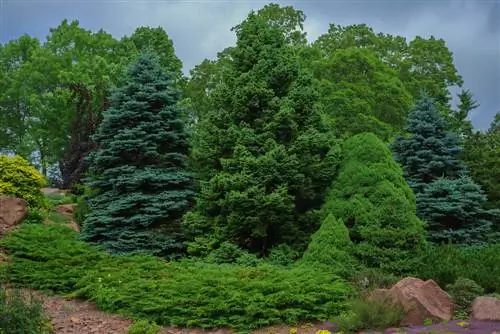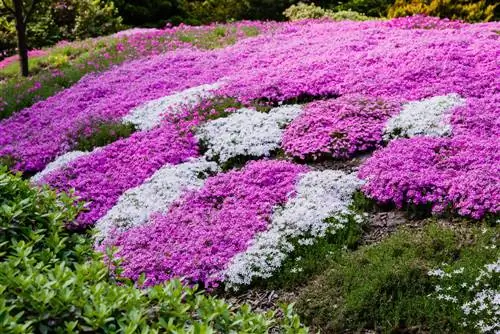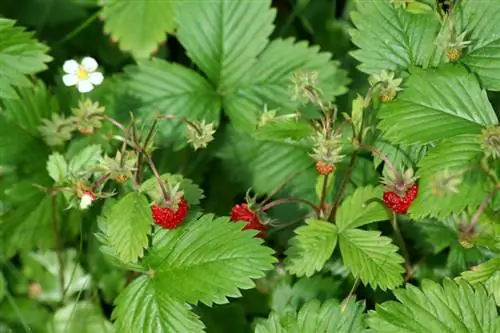- Author admin [email protected].
- Public 2023-12-16 16:46.
- Last modified 2025-06-01 06:02.
When you think of ground cover, you usually think of leafy and flowering flat perennials - but some creeping conifers can also be used to make low areas and beds attractive and easy to care for. Here are a few ideas.

Why should you use ground cover conifers?
Ground cover conifers such as creeping juniper, thuja and yew offer attractive decorative value, robustness, winter hardiness and low maintenance requirements. They are suitable for heather gardens, gravel gardens, rockeries and grave plantings.
Conifers as ground cover - their special appeal
When planting areas that are literally designed to be manageable and low, the usual candidates usually come to mind first - periwinkle, ysander or Waldsteinia are popular weed deterrents, for rock gardens the typical Mediterranean sun worshipers are thyme, Scented stonecrop or stonecrop are established classics. The fact that there are also creeping conifer species should be kept in mind when designing the area - because conifers can be used to create very characterful accents, especially in grave plantings, heath gardens or gravel gardens with a Far Eastern touch.
Another advantage of ground-covering conifers: They are generally very robust and hardy. This means they have a good shading effect and retain their attractive needlework all year round. Due to their moderate growth rate and often very even expansion, they hardly require any care, especially no pruning.
Good arguments for conifer ground cover are:
- structurally attractive decorative value in heather or gravel gardens
- very robust and hardy
- hardly any care needed
Varieties for different design plans
Creeping conifer species are found primarily within the genera of juniper, thuja and yew.
creeping juniper
Juniper in particular offers a fairly wide range of low species that are suitable for designing front gardens or rock gardens. There are creeping junipers with very different needle shapes, sometimes with typically flat, lobed branch structures, but sometimes also with fine, short-needle and dense twigs or elongated, panicle-like shoots. Small dwarf shrub junipers can also be suitable for solitary planting in structured stone or heather garden designs.
Thujen
Dwarf spherical arborvitae do not cover much of the ground - but with their eponymous small, spherical growth, they can be an attractive addition to low area plantings. You can keep the small tree very accurate by cutting it regularly or let it grow naturally, although there is no risk of overgrowth depending on the variety.
Yews
Dwarf yew species can also look very pretty, especially in the heath garden in combination with Erika: The stone yew, for example, offers a familiar sight with its deep green, soft needle pattern, the golden yellow cushion yew is a little brighter - if you like it a little more unusual, can rely on delicate creeping discs whose cuddly shoots are very decorative, especially over a bed of pebbles.






